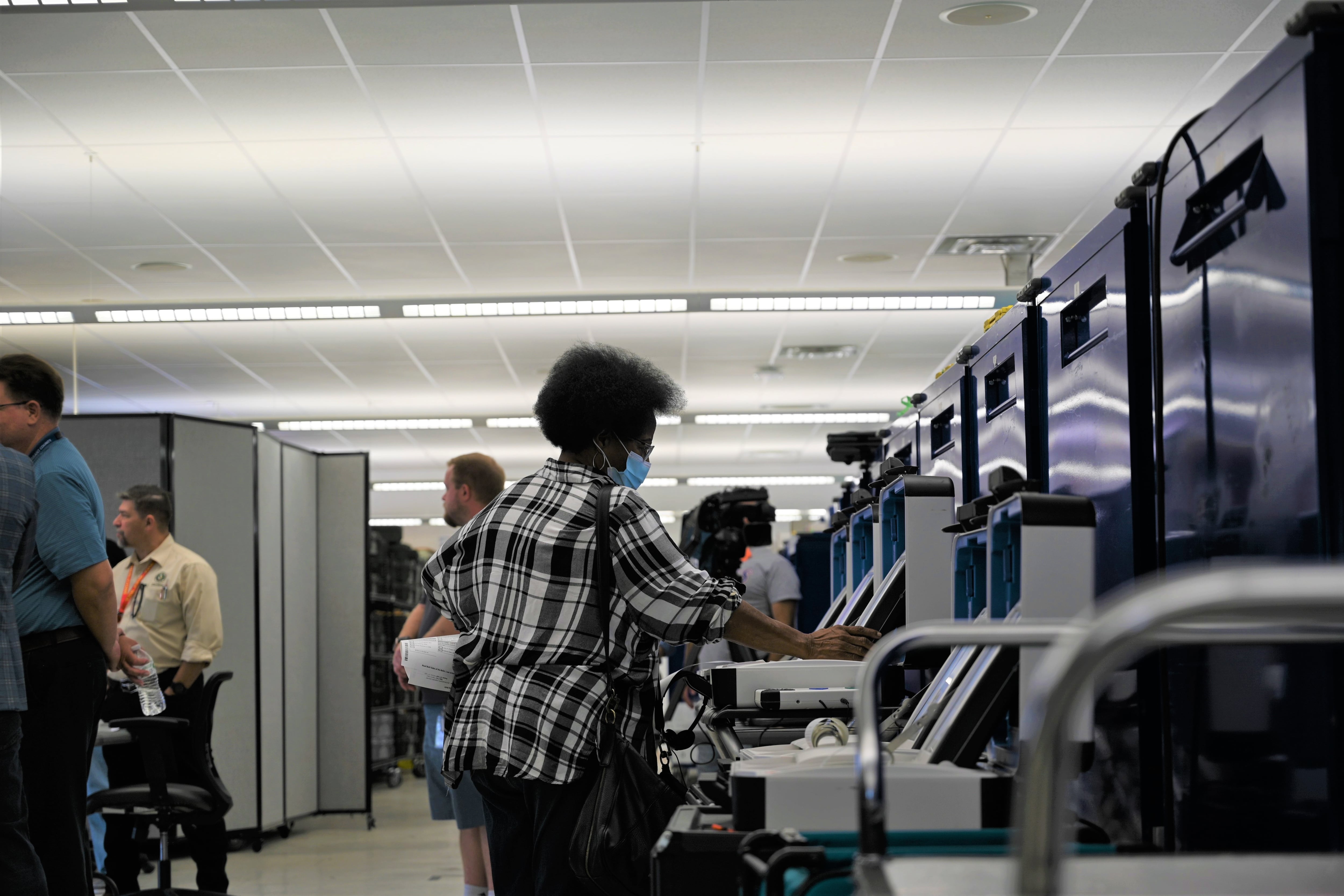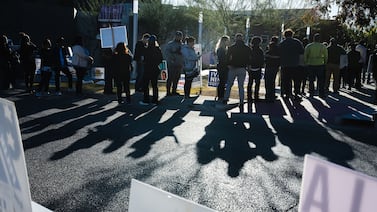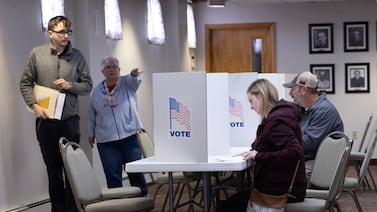This article originally appeared on the Fort Worth Report.
Despite months of rancor in Tarrant County over the viability of voting machines and the accuracy of ballot counting, a test Friday allowing members of the public to test the system themselves was sparsely attended.
Hundreds of sample ballots stood ready, but fewer than a dozen participants cast only 56 ballots. Most testers cast multiple ballots; none would speak to the press.
One Friday participant, Xiaomei Wang, is a frequent critic. She spoke publicly at the county commissioner’s court meeting on Sept. 13.
“How can one prove the testing result is not an outcome from a program but the true testing results?” Wang said at the meeting. Tarrant County Elections Administrator Heider Garcia held Friday’s public test to address this very concern — that county-run testing would reach a predetermined conclusion. He hoped that allowing people like Wang to test the machines themselves would allow them to trust the results.
“I think some of these people who are volunteering for these groups have genuine concern and they’re being misled and, you know, taken advantage of,” Garcia said. “So coming in and seeing the process and being informed, hopefully will give them tools to say that’s not what my group told me.”
Troy Havard, Tarrant County’s assistant elections administrator, handed out ballots to participants. The ballots were marked with a red stamp reading “sample ballot,” and participants could mark them as they liked using two voting machines. Participants were given two hours, from 8 to 10 a.m., to fill out and submit a ballot. Two scanners were set up alongside a drop box for absentee ballots, which participants could also test themselves.
“I was expecting us to have a line out the door waiting when we opened,” Havard said.
Testing board member Kat Cano marked multiple absentee ballots with pencil, pen and even nail polish to illustrate how elections workers sometimes have to work collectively to adjudicate any unclearly marked votes on absentee ballots. Cano said she didn’t feel the additional test was necessary but hoped it would be “a good opportunity for the public to actually come in and be involved in it so that they can see how it works and be more confident in the results.”
Participants observing the test watched as members of the ballot board adjudicated absentee ballots cast during the test. Then, election officials took the results of the absentee ballots and combined them with the results from the voting machines to produce a report.
At the end of the day, all of the ballots cast matched the results from the tape produced by the tabulators. A small discrepancy existed in absentee ballots, but it was rectified through the testing process, Garcia said. Wang would not comment on whether the results increased her confidence, nor would any other activist.
The lack of participation was disappointing for Garcia, who has been attempting to address the concerns of critics for months. Earlier this year, he set aside an entire room in the county office with video security, allowing dozens of such critics to manually inspect thousands of ballots from the March 2020 primary over a period of weeks. He has received hundreds of angry emails and calls about the system, all of which speak to fundamental misunderstandings shared by a range of Tarrant County activists.
The concerns are often identical to those expressed by skeptics of the 2020 election. The work of the activists in Tarrant County follows a national movement to encourage local voters to question the work of their local elections offices by appointing poll watchers, performing “audits” of previously held elections and agitating against the use of voting machines.
Many Tarrant County activists believe that the returns in 2020 were tainted by fraud, though an audit performed by the Republican-led secretary of state’s office found no such evidence. Still, the activists have sent postcards to local voters asking them to share personal information and knocked on hundreds of doors to check the accuracy of the voter roll. They spent weeks doing their own audit of the March 2020 primary, and have told county officials they intend to repeat that process for other elections as the ballots become available. Garcia said their efforts have helped misinformation about the election system spread.
In order to reach out to those who doubt the process, Garcia and the Texas Secretary of State’s office heavily publicized the opportunity for the public to cast sample ballots and watch the tabulation process — posting to social media and sending notices to local news.
“It’s the first time any county has done this and we support it,” said Sam Taylor, a spokesman for the Texas secretary of state. The state sent a trainer to observe the event.
“Heider is a person who very much values transparency and goes above and beyond to demonstrate that to the voters in Tarrant County,” he said. “We absolutely recommend more counties offer this type of transparency.”
As staff conducted the public test near the back of the Tarrant County Elections Administration warehouse, the rest of the building was still full of staff, finishing up the more comprehensive, state-mandated logic and accuracy test.
The state requires this test to ensure that every ballot in Tarrant County is printed correctly and every voting machine will work correctly on Election Day. Members of the testing board run a ballot marked for every single candidate through a test to ensure that the ballot is correct. Then, the board runs every ballot through every machine.
“By the end of the test, you should have voted for everyone and every race and tested every machine,” Garcia said. “So now you know the equipment works, and it’s properly configured.”
The public test, while similar to a traditional logic and accuracy test, was an extra step to engage skeptics. Though, Garcia said, with the measures taken to clarify the process and add additional transparency, there will likely always be members of the public skeptical about the election process.
“We can only do so much,” he said. “But I think for the vast majority, it has shown that there is an answer. There are records. There’s a process in place that takes care of those myths.”
Votebeat editorial director Jessica Huseman contributed to this report.





